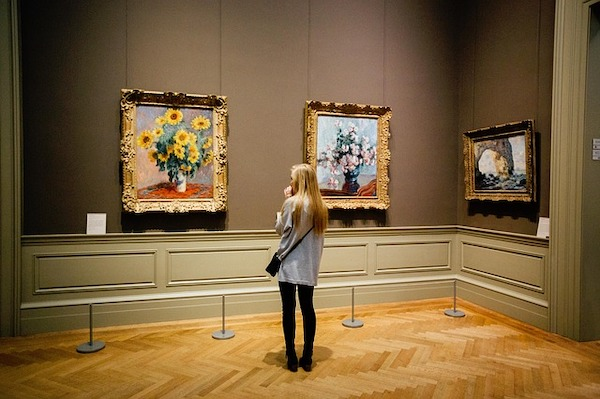Between 2008 and 2018, digital cultural practices have grown considerably. "More than a third of French people listen to music online, 44% play video games and three quarters of young people (15-24 years old) watch videos online. "The analysis by generation shows both the singularity of the younger generations, in which digital practices have become the majority, and that of the baby boomer generation.
Conducted throughout 2018 among a sample of over 9,200 people in metropolitan France, thesurvey on cultural practices is the sixth edition of a series begun in the early 1970s and designed to measure the population's participation in leisure and cultural life.
This sixth edition allows us to observe the evolution of cultural practices since the previous edition in 2008, but also since the 1970s, and thus offers a panorama of almost half a century of the dynamics of cultural practices of the population aged 15 and over.
The considerable growth of digital cultural practices in ten years
Over the last ten years, listening to recorded music has become a common practice among people aged 15 and over, and this growth owes much to the increasing diffusion of digital uses among the population.The spread of digital uses also favors the consultation of online videos and social networks, two practices that, in ten years, have taken their place in the daily lives of many French people, whereas they were still uncommon in 2008.
Video games have gradually taken hold among the French population, reaching an ever wider audience as the first generations of players age. Playing video games, listening to music and watching videos online are now widespread practices among young people.
The cultural singularity of recent generations
"An emerging phenomenon of the last decade as a mass practice, digital uses have thus become, in a decade, the majority in the daily life of young people, whether it is listening to music online, watching videos online every day, social networks or video games. For this generation, content from traditional media, especially radio, is losing its centrality, while social networks have become an essential source of information.This irruption of digital uses does not, however, erase young people's taste for going out: in 2018, as before, young people (15-24 years old) assiduously attend cultural venues, whether they are cinemas, theaters, libraries or even heritage sites (museum, exhibition or historical monument). Indeed, although the increase in attendance presented above is essentially driven by older audiences, the levels of youth participation in these cultural offerings are structurally high throughout the period.
Spectacular rise of the video game, on the way to stabilization
Over the last two decades, the practice, at least occasionally, of video games has increased significantly in the population, while remaining predominantly male.Among those aged 15 and older, 39% of women and 49% of men respectively play in 2018, compared to 15% of women and 24% of men in 2008.
The increase in the number of video games played by the French population over the last twenty years masks major generational disparities. As with daily music listening, the spread of this practice is mainly driven by generational turnover.
The generations born before 1954 play few or no video games, both twenty years ago and today - even if a significant development of this practice is observable among women of these generations between 2008 and 2018 (manifested by a significant increase to the right of the generational curves), probably related to the success of mini-games on smartphones.
The rise of video game practices is particularly visible from the generation born between 1965 and 1974, the first to have experienced the arrival of consoles in their living room at a still young age.
For this generation, video games really take off after the age of 30, especially among men: between the ages of 33 and 48, the majority of men in this generation are gamers (57%).
The next generation, born between 1975 and 1984, grew up in an era marked by the widespread availability of equipment for playing video games, whether it be consoles, computers or smartphones. This group is characterized by much higher levels of practice, around 50% for women and 70% for men, whose involvement in the practice remains stable as they age.
audiovisual practices widen the gap between generations
"The drop in daily television consumption among young people does not mean that they are turning away from screens. In many cases, this partial detour from television content is accompanied by a high level of consumption of audiovisual content on the Internet - a practice that is still largely specific to young people.While the digital use of music listening has favored a certain convergence of practices, whether between generations, age groups, types of territories or social backgrounds, the development of digital audiovisual offerings has, on the contrary, led to a reinforcement of the differences in practices between age groups.
This phenomenon, which has appeared over the last ten years, is counteracting historical trends that tended to converge the television practices of the youngest and those of their elders.
Thus, in 2018, while the over-60s continue to favor the use of a set to watch TV, younger people are now choosing other terminals more often: more than a third of 15-19 year-olds (35%) say they watch TV on a mobile device (smartphone or tablet), with this practice involving only a small minority of those aged 60 and over (5%).
And if these terminals allow people to watch television, they also open up to other audiovisual content, which is very popular with recent generations. " The decline in television consumption among the younger generation is accompanied by the development of new practices, linked to the consumption of online audiovisual content, which are added to the former without completely replacing them .
A practice now almost reserved for the youngest, the consumption of audiovisual content broadcast outside of television channels is becoming, in 2018, very widespread: half of 15-24 year olds thus declare that they watch videos on the Internet every day, outside of television, whether they are hosted by social networks or on a broadcasting platform, compared to only 3% of those aged 60 and over.
Loss of momentum in amateur practices between 2008 and 2018
Photography, music, dance, theater, drawing, painting or writing (poems, short stories or a novel) are activities practiced by four out of ten (39%) French people aged 15 and over in 2018. The practice of these activities has been trending upwards since the 1970s and until 2008: nearly one-third of those aged 15 and over said they were practicing one of these activities in the early 1970s and they were 50% doing so in 2008." This decline should be viewed with caution, however, as the range of artistic activities has diversified, particularly with the development of digital practices competing with those observable in the six editions of the survey from 1973 to 2018. An examination of these activities reveals contrasting developments: some are becoming less common (in particular musical practice), while others are being maintained (graphic arts, theater, writing) or are developing (dance, photography)."
Amateur practices increasingly "digitally equipped
"In the context of strong technological innovations and the development of new tools facilitating the production of content that have marked the last few decades, one would have thought that artistic practices for which recourse to the digital medium was possible - whether it be writing, drawing, music, photography or video - would enjoy growing success - or even that new practices would emerge.If digital tools have not been enough to keep the share of amateurs constant nor to encourage artistic impulses, they have however been widely adopted by amateurs, who tend to use them more and more, in particular to facilitate the sharing of personal creations, thanks to the emergence of digital platforms promoting this.
If we consider amateur practices (writing, drawing, music, photography, video), we can see that the share of digital tool users among the 15+ year olds practicing amateur artistic activities has risen sharply: adopted by a third of practitioners in 2008, the use of digital tools concerns, in 2018, half of the amateurs of an artistic activity where the use of digital tools is possible. This increase in the number of digital tool users concerns on average more men, less young people and people living in Paris.
In 2018, audio and video editing appeals to 9% of the 15+ age group, especially the younger ones (19% of 15-19 year olds vs. 4% of 60+), up from 4% in 2008.
As with photography, this activity is often associated with other amateur artistic practices, whether musical or not: the 15-19 year-olds who made video montages practiced an average of 2.8 artistic activities in addition to this first amateur activity (compared to an average of 2 more activities for all 15 year-olds and over).
The art of staging one's own creations: a new cultural practice?
The use of social networks in the context of amateur artistic activity has not followed the same dynamic as that of consulting social networks.While the latter has seen a dramatic 40-point jump in ten years (13% in 2008 vs. 53% in 2018 of those 15 and older were consulting social networks - an increase that can be explained by the emergence of social network platforms during this decade), the use of social networks as a means of publicly disseminating amateur-produced content (images, writings, videos, music) has remained perfectly stable, since it concerns 7% of those 15 and older in 2008 as in 2018.
Thus, it seems that there are more and more spectators ("followers") of a smaller number of active amateurs in these spheres ("bloggers", "Instagrammers" or "YouTubers"). "This phenomenon would constitute the emergence of a new artistic practice in itself, that of the art of staging one's own creations, certainly difficult to measure as such through a statistical concept, because of its protean character.
"On the other hand, broadcasting one's creations after having made them concerns more amateurs in 2018: 15% of amateurs aged 15 and over used social networks to share their productions compared to 10% in 2008, perhaps a sign that consulting social networks encourages more of the behaviors of influencers by sharing one's own universe online."Référence :





